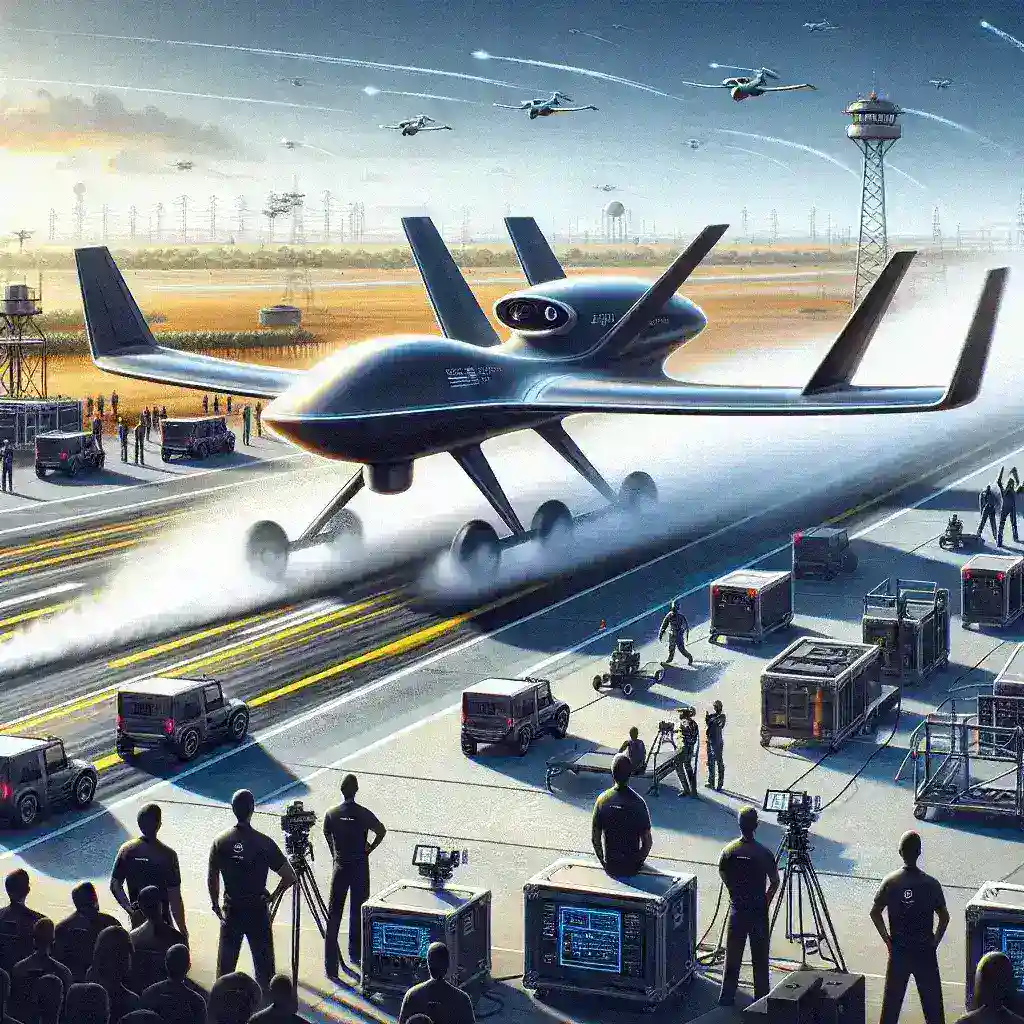DRDO’s Archer-NG UAV: A Leap Forward in Indian Defence Technology
The Defence Research and Development Organisation (DRDO), India’s leading defense research agency, has achieved a remarkable feat with its Archer-NG unmanned aerial vehicle (UAV). The completion of successful high-speed taxi trials signifies a crucial step towards the much-anticipated maiden flight, marking a significant leap forward for India’s indigenous defense capabilities. This development is not just a technological triumph; it’s a testament to India’s growing prowess in designing and manufacturing advanced military technology.
The Archer-NG, a next-generation UAV, is poised to revolutionize surveillance, reconnaissance, and potentially even strike capabilities within the Indian armed forces. Its successful taxi trials, conducted under rigorous testing conditions, demonstrate the robustness and reliability of its design. This achievement follows years of dedicated research, development, and meticulous testing, reflecting the DRDO’s unwavering commitment to technological self-reliance.
Understanding the Significance of High-Speed Taxi Trials
Before a UAV takes its first flight, exhaustive ground testing is crucial. High-speed taxi trials are a pivotal part of this process, simulating the stresses and forces experienced during takeoff and landing. These trials involve running the UAV down a runway at increasingly higher speeds, evaluating the performance of its engines, control systems, and overall structural integrity. The successful completion of these tests ensures the aircraft is ready for the challenges of flight.
For the Archer-NG, the successful high-speed taxi trials are not just a procedural step; they represent a validation of the DRDO’s engineering prowess. It showcases the team’s ability to overcome significant technological hurdles and develop a sophisticated UAV capable of high-speed operations.
Archer-NG: Capabilities and Technological Advancements
While specific details about the Archer-NG’s capabilities remain largely classified, it’s understood to be a significantly advanced UAV compared to its predecessors. Reports suggest that the Archer-NG boasts enhanced endurance, improved payload capacity, and sophisticated sensor integration. This points towards a UAV capable of performing a wider range of missions, from long-duration surveillance to precision targeting.
The technological advancements incorporated into the Archer-NG are noteworthy. These likely include improvements in aerodynamics, propulsion systems, and onboard avionics. The use of advanced materials and manufacturing techniques could have also contributed to its enhanced performance and reliability. Furthermore, the integration of cutting-edge sensor technology, potentially including advanced thermal imaging and synthetic aperture radar (SAR), would significantly enhance its reconnaissance and surveillance capabilities.
Implications for India’s Defence Strategy
The successful development of the Archer-NG has significant implications for India’s defense strategy. It strengthens India’s strategic autonomy by reducing reliance on foreign suppliers for critical military hardware. This self-reliance is paramount in maintaining national security and responding swiftly to evolving geopolitical dynamics.
The Archer-NG’s enhanced capabilities will substantially bolster the Indian armed forces’ intelligence, surveillance, and reconnaissance (ISR) capabilities. This will allow for more effective monitoring of borders, improved threat detection, and enhanced situational awareness. Furthermore, depending on its future development, the Archer-NG could contribute to precision strike capabilities, adding another layer to India’s defense capabilities.
Comparison with Other UAVs in the Global Market
Compared to other UAVs in the global market, the Archer-NG’s positioning within the Indian context is particularly significant. While many nations possess advanced UAV technology, the Archer-NG represents a homegrown solution tailored to the specific needs and geographical challenges faced by India. Its development signifies a shift towards a more indigenous and self-reliant defense ecosystem. This reduces vulnerability to foreign sanctions and supply chain disruptions, making it a crucial strategic asset.
In comparison to some commercially available UAVs, the Archer-NG’s potential military applications provide a significant advantage. While the commercial market offers high-endurance surveillance options, the Archer-NG’s likely integration with advanced weaponry and targeting systems positions it as a more versatile and potent asset.
Challenges and Future Prospects
While the successful taxi trials are a significant milestone, challenges remain before the Archer-NG reaches full operational capability. Further testing and refinement are essential to ensure seamless operation under diverse environmental conditions and to rigorously evaluate its performance envelope. Integration with other military systems will also require thorough testing and validation.
Looking to the future, the Archer-NG has the potential to be further developed and upgraded to incorporate even more advanced technologies. This could include improved artificial intelligence (AI) for autonomous operation, enhanced communication systems, and integration with swarms of smaller UAVs. The continued investment in research and development will determine the ultimate capabilities and operational potential of this promising UAV.
A Glimpse into the Future of Indian UAV Technology
The Archer-NG’s success demonstrates the DRDO’s capability to develop cutting-edge UAV technology. It sets a precedent for future advancements in India’s unmanned aerial systems, potentially leading to the development of even more sophisticated UAVs for various military and civilian applications. This accomplishment encourages continued innovation and investment in the nation’s defense technology sector, fostering a culture of self-reliance and technological excellence.
The long-term implications extend beyond military applications. The technologies developed for the Archer-NG could have spin-off benefits for other sectors, such as agriculture, infrastructure monitoring, and disaster relief. This underscores the potential of defense research to drive broader technological advancement and economic growth.
Conclusion: A Moment of Pride for India
The successful completion of high-speed taxi trials for DRDO’s Archer-NG UAV is a momentous occasion for India. It represents a significant achievement in indigenous defense technology, strengthening India’s strategic autonomy and enhancing its capabilities in surveillance, reconnaissance, and potentially, precision strikes. The anticipation for the maiden flight is high, symbolic of India’s progress in becoming a leading player in the global UAV market and a testament to the dedication and hard work of the DRDO team.
The Archer-NG is more than just a machine; it’s a symbol of India’s growing technological prowess and its unwavering commitment to safeguarding its national security. The journey toward a fully operational Archer-NG is promising, and the world watches with keen interest as India continues to push the boundaries of its defense technological capabilities. The successful taxi trials are just the beginning of a new era in Indian defense technology, signaling a stronger, more independent, and technologically advanced India on the world stage.

